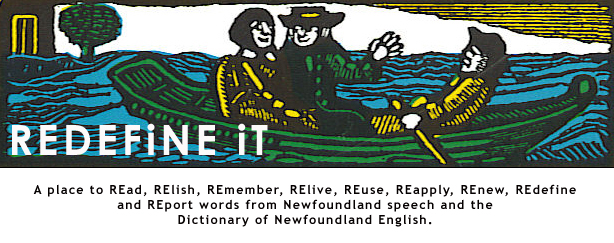The following is an excerpt from a website dedicated to weather:
The Weather Doctor
IS FONDLY DEDICATED TO THE MEMORY OF:David Ludlum, Eric Sloane, Guy Murchie, George R. Stewart and that Transcendental Meteorologist Henry David Thoreau.
Included is a page about words for weather. The following excerpt includes a mention of "faffering":
Newfoundlanders are especially fruitful in coining unique weather words. Here are a few.
Silver glitter describes an ice storm's deposit which then becomes a silver thaw when the ice melts. Sheila's brush names a fierce wind and snowstorm striking around St Patrick's Day that is usually considered the last of the winter. Sheila, according to legend was either St Patrick's wife, sister, or mother.
Wreckhouse winds are strong gales known for blowing trains off tracks and trucks off roads. These southeasterly winds blow along the south coast of Newfoundland west of the Burin Peninsula, as far west as Port aux Basques. The Wreckhouse winds not uncommonly gust in this part of the island stronger than over the open water due to topographical convergence. Stun breezes are a bit tamer but still strong, winds over 37 km/h (23 mph or 20 knots).
On the Rock, mauzy denotes damp and warm, muggy weather, sometimes with light rain. Oppressively hot and humid weather is loggy. Misk (or misky) describes light rain or mist; or when vapour rising from the sea after a cold night (sea smoke or steam fog). Scad is a sudden and brief rain or snow shower. And with strong winds added, a scad becomes a dwigh. Scad is not to be confused with scuddy weather which is uncertain, characterized by sudden scuds or gusts of wind.
Some of the other Canadian wind-specific words include the gentle airsome wind and fairy wind, the keewatin and siwash, the nordet, the faffering, screecher and shuff, the sheelagh, farmer's fertilizer and lambkiller, and the meringue storm.
Subscribe to:
Post Comments (Atom)





No comments:
Post a Comment